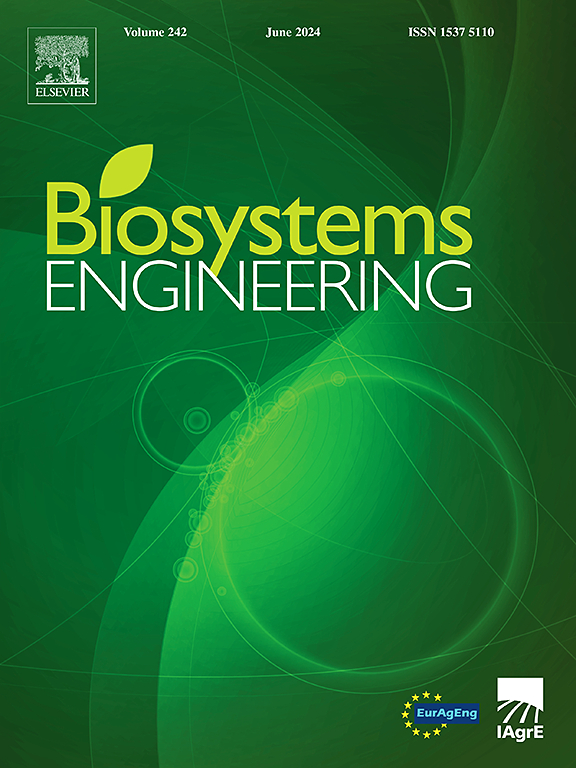Acceleration of pipeline analysis for irrigation networks through parallelisation in Graphic Processing Units
IF 4.4
1区 农林科学
Q1 AGRICULTURAL ENGINEERING
引用次数: 0
Abstract
This paper reports on the development of a Farming irrigation network Analysis and Simulation Tool (FAST) on Graphic Processing Units (GPU). The tool is oriented to accelerate the optimisation of pressurised hydraulic networks equipped with hydrants and/or sprinklers, which may require millions of hydraulic simulations to converge to the optimal solution. GPU devices contain a large number of processors working in parallel and are capable of applying the same computational algorithms over different simulation parameters. Collective and on-farm pressurised irrigation networks typically have a branched structure, without flow recirculation. This permits to implement massive parallelisation of hydraulic calculations. The efficiency of the proposed code was compared to the EPANET hydraulic software, which is widely used worldwide for this type of problems. Results show efficiency gains larger than 6,000x with respect to simulations performed using the EPANET developer's toolkit. An evaluation of the efficiency scalability in terms of the network size was also assessed. Results showed a dramatic performance improvement as the network size increased. FAST-GPU leverages the massive parallelisation capabilities of GPUs to achieve a staggering speedup compared to traditional CPU-bound simulations. This paradigm shift opens the doors for complex irrigation network analysis previously considered computationally prohibitive. This is particularly necessary for the optimisation of network design and management processes.
通过图形处理单元的并行化加速灌溉管网的管道分析
本文报道了基于图形处理单元(GPU)的农业灌溉网络分析与仿真工具(FAST)的开发。该工具旨在加速配备消火栓和/或洒水装置的加压液压网络的优化,这可能需要数百万次水力模拟才能收敛到最佳解决方案。GPU设备包含大量并行工作的处理器,并且能够在不同的模拟参数上应用相同的计算算法。集体和农场加压灌溉网络通常具有分支结构,没有水流再循环。这允许实现水力计算的大规模并行化。将所提出的代码的效率与EPANET液压软件进行了比较,EPANET液压软件在世界范围内广泛用于此类问题。结果表明,与使用EPANET开发人员工具包进行的模拟相比,效率提高了6000倍以上。根据网络大小对效率可扩展性进行了评估。结果显示,随着网络大小的增加,性能有了显著提高。FAST-GPU利用gpu的大规模并行化能力,与传统的cpu绑定模拟相比,实现了惊人的加速。这种模式的转变为复杂的灌溉网络分析打开了大门,以前认为计算是禁止的。这对于优化网络设计和管理流程尤其必要。
本文章由计算机程序翻译,如有差异,请以英文原文为准。
求助全文
约1分钟内获得全文
求助全文
来源期刊

Biosystems Engineering
农林科学-农业工程
CiteScore
10.60
自引率
7.80%
发文量
239
审稿时长
53 days
期刊介绍:
Biosystems Engineering publishes research in engineering and the physical sciences that represent advances in understanding or modelling of the performance of biological systems for sustainable developments in land use and the environment, agriculture and amenity, bioproduction processes and the food chain. The subject matter of the journal reflects the wide range and interdisciplinary nature of research in engineering for biological systems.
 求助内容:
求助内容: 应助结果提醒方式:
应助结果提醒方式:


